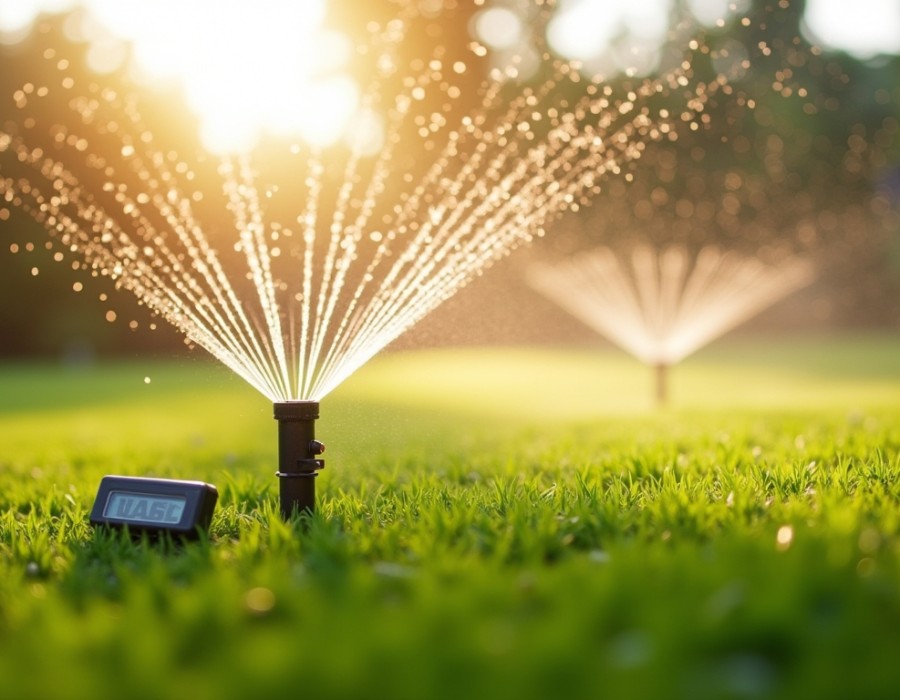Ever wonder why your neighbor’s lawn looks greener than yours, even though you both water regularly? The secret isn’t just how much water your lawn gets it’s when and how often.
Having the right watering schedule can make all the difference. Too much water drowns the roots, too little leaves dry patches, and the wrong timing wastes water without helping your grass grow.
In this guide, we’ll break down the best times to water, how often to do it, and a few simple tips to keep your lawn healthy, lush, and vibrant all year long.
How Much Water Does Your Lawn Need?
First you need to understand that how much water your lawn actually needs. A healthy lawn doesn’t need constant watering it just needs the right amount. Most lawns do best with about one inch of water per week, including rainfall. That’s usually enough to soak the roots and keep your grass green without wasting water.
You can test it easily using a rain gauge or an empty tuna can. Place a few around your yard, run your sprinklers, and see how long it takes to collect an inch of water. That tells you exactly how long to water each week.
Remember, deep watering once or twice a week is better than light watering every day. It helps the roots grow deeper, making your lawn stronger and more drought-resistant — so it stays lush even when the weather gets hot.
Best Time of Day to Water Your Lawn
When it comes to lawn care, timing is everything. The best time to water your lawn is early in the morning — ideally between 5 a.m. and 9 a.m. During these hours, the air is cool and the wind is light, allowing water to soak deep into the soil instead of evaporating quickly.
Watering in the middle of the day wastes water because of the heat, and watering at night keeps the grass too wet for too long, a perfect setup for mold and lawn diseases.
If you’ve invested in an irrigation system installation in Boston, you can easily set automated schedules to water your lawn at the ideal time every morning. This small adjustment keeps your yard greener, healthier, and more efficient all season long.
So, set your sprinklers for those calm early hours. It’s the easiest way to make sure your lawn stays hydrated, healthy, and free from unnecessary water waste.
Seasonal Watering Schedule Guide
Every season brings different watering needs for your lawn. Understanding when and how much to water and how to find a leak in your irrigation system early ensures your grass stays green without wasting water. Here’s a simple guide to follow:
Spring
As temperatures warm up, begin watering moderately. This helps your lawn’s roots wake up and grow stronger after winter dormancy. Check for leaks or clogs in your system before ramping up usage.
Summer
Your lawn needs deep and consistent watering during hot months to combat heat stress. Run your irrigation system early in the morning and inspect it regularly for any leaks or uneven watering.
Fall
Gradually reduce watering as temperatures cool. This helps prevent fungal diseases and prepares your lawn for winter. It’s also a good time to test for leaks and make any repairs before the off-season.
Winter
During dormant months, lawns need minimal or no watering. Drain your irrigation system to avoid freeze damage and check for hidden leaks that may have developed over the year.
Smart Watering Solutions
Consistent watering is the secret to a lush, green lawn that thrives all year long. But watering isn’t just about turning on sprinklers — it’s about knowing when, how, and how much to water. Homeowners who invest in irrigation system installation in Wayland often enjoy healthier lawns because these systems deliver the right amount of water, evenly and efficiently.
To maintain long-term lawn health, water deeply a few times a week rather than lightly every day. Deep watering encourages stronger root growth and better drought resistance. Also, schedule irrigation early in the morning to minimize evaporation loss. Regularly inspect your sprinklers for leaks, clogs, or misaligned heads to ensure even coverage.
By combining smart watering habits with a well-installed irrigation system, you’ll save water, reduce costs, and keep your lawn looking vibrant season after season.
Conclusion
A healthy, vibrant lawn doesn’t just happen it’s the result of smart watering habits and a well-maintained irrigation setup. By understanding how much water your lawn truly needs, watering at the right time of day, and following a seasonal schedule, you can keep your grass lush year-round. Whether you’re using a hose, sprinkler, or a professional irrigation system installation in Wayland, consistency and care make all the difference. Remember deep, steady watering builds strong roots, saves water, and keeps your lawn ready to impress in every season.





Comments